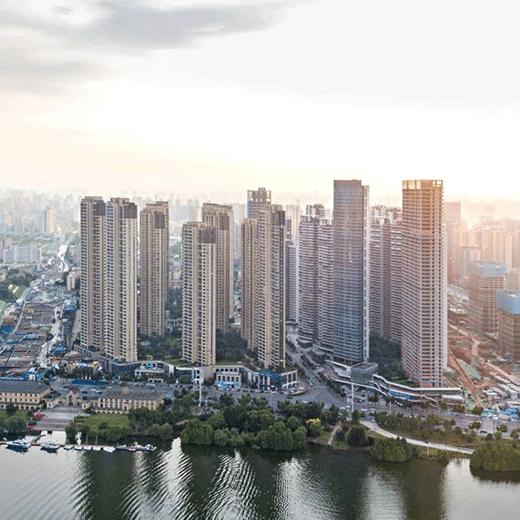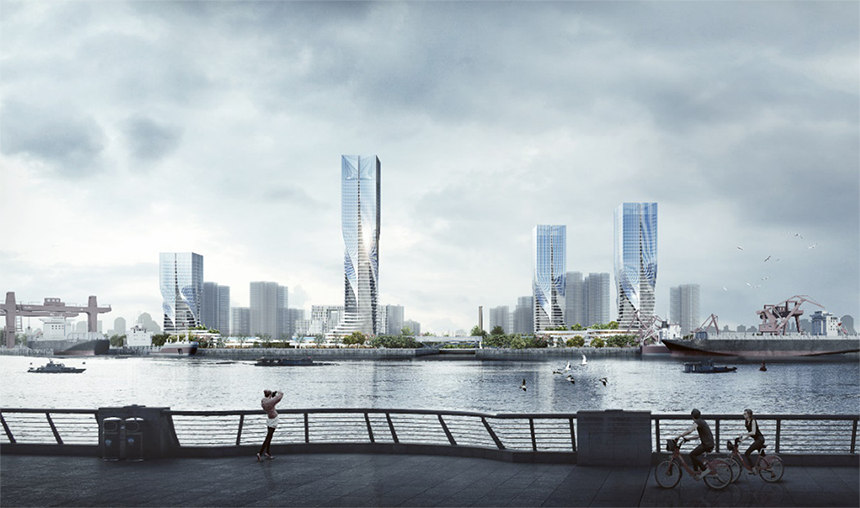

The city of Guangzhou with a history of more than 2500 years was born along the banks of the "Yunshan Zhushui" Riverside. Along the development context of this city, the urban life industry human settlements continue to evolve. Regardless of dynasties and dynasties, Guangzhou is the ebb and flow of the riverside and the rise and fall of space and place: In the 21st century of reform and opening up, Guangzhou’s industrial coastline has been gradually adjusted to the Pearl River Estuary, and shipbuilding and car building have chosen Nansha. Dahuxiaohu Island and Longxue Island are nearby. The scale of the city is expanding, and the commercial and living atmosphere of the original urban core area is improving. The manufacturing industry is looking for a new type of transportation convenience, looking for its own suitable location, and gradually giving way to the appreciation of urban life and various commercial and service industries. It means "retreat two into three".
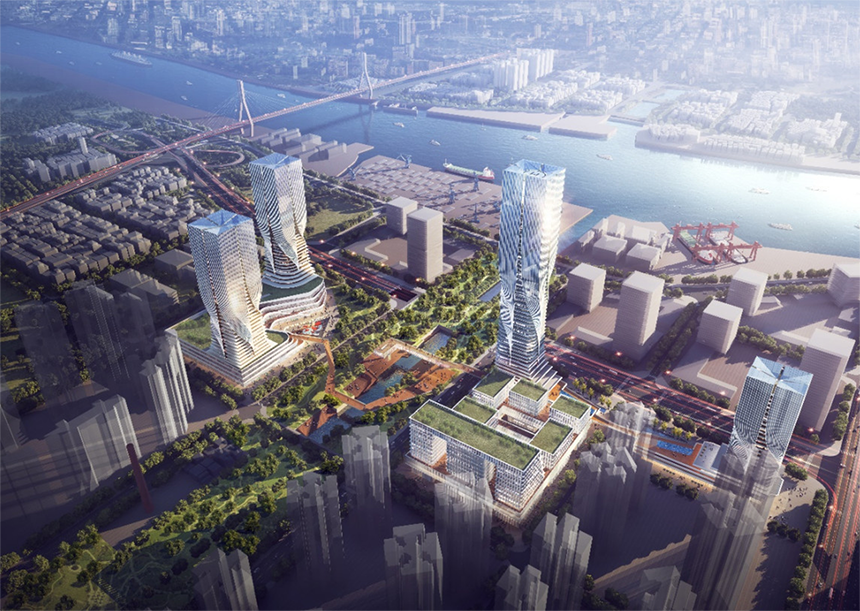

At present, retreat from two to three becomes the main thread of the development of global waterfront cities. The inland water transport mode, which uses water transport as the main logistics mode, has gradually given way to the road and rail mode---or move to deeper water at the container terminal represented by large standard containers. In the industrial park of the Linhai Port District, either the old industry will be closed, the site will be upgraded to urban life, finance and business and other service-oriented businesses will become the tertiary industry: the "port-industry-city three-dimensional life cycle" of This case is a classic note.
With the establishment of the development strategy of “activating the stock and strictly controlling the increment” of the three major urban agglomerations of Beijing, Shanghai and Guangdong by the Ministry of Land and Resources, especially the strict control of newly added construction land in mega-cities with a population of more than 10 million, the redevelopment of stock land will not be possible. Avoiding land has become a key driving force for the current round of urbanization in large and medium-sized cities in coastal areas. Nowadays, Guangzhou Steel and Guangzhou Shipyard, which are located in the hot spots in the west of Guangzhou and the same city of Guangzhou and Foshan, have relocated from the intersection of the Pearl River front and rear channels, where they were born, and have become a typical case of urban development in the Pearl River Delta metropolitan area.
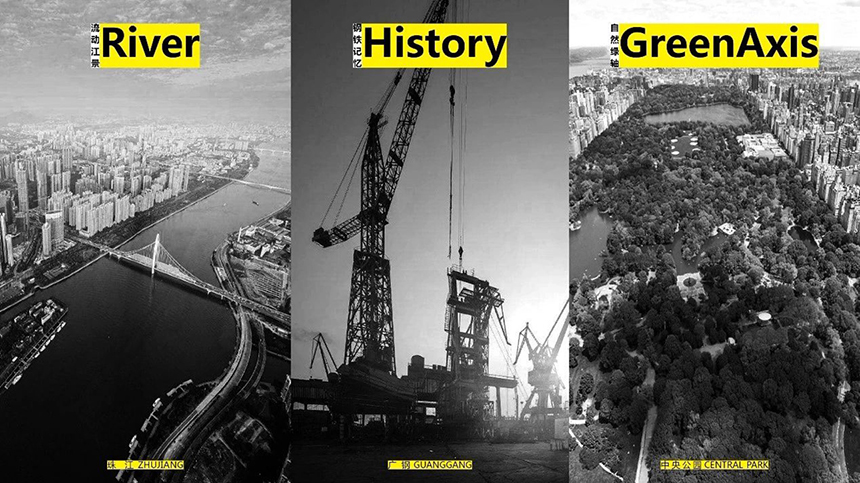
The grand planning area of Guanggang New City is bordered by Fangcun Avenue in the east, Huadi Avenue in the west, Hedong Road in the north, and Huancheng Road in the south. The total planned land area is 657.4 hectares. The project parcel is located in the old factory area of Guangsteel, which belongs to Liwan District. It is located on the riverfront plot on the east side of the planned area of Guangsteel New City. It is the only commercial plot separated from the Guangzhou Shipbuilding plot all the way. It is positioned as one of the core engines on the west bank of the Pearl River. , Has the characteristics of a site integrating landscape, culture, history and image, and we hope to create a focal point of urban public life with the characteristic memory of Guanggang.
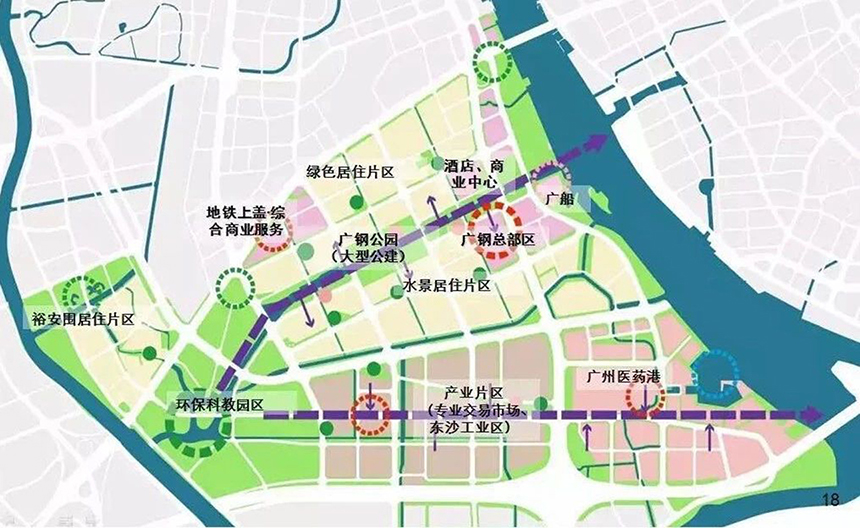
Guanggang New City will focus on combining the protection and utilization of the industrial heritage of the Guanggang site and the characteristics of the surrounding villages in the city, highlighting the industrial culture and Lingnan culture, implementing the overall space, transportation, and waterfront landscape pattern of the Huadi Eco-city, and planning the "two-axis" , Five pieces, multiple corridors, multiple nodes" spatial structure, and 16 industrial heritage sites will be preserved and transformed into the central green axis of Guangzhou Steel New City, forming the only industrial cultural heritage park in Guangzhou. Three characteristics of steel memory and large-scale urban green parks. At the same time, the project is surrounded by subway entrances and exits, trams, and docks. There are rich forms of transportation. The complete and orderly road network expands the project’s radiation range, better attracts the flow of people, and also provides users with maximum convenience and travel. Accessibility.
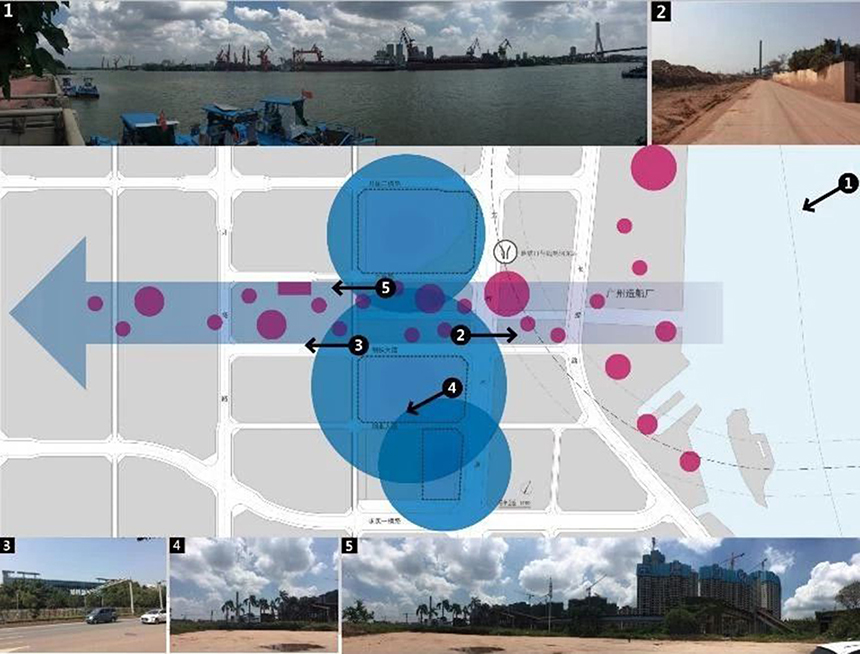
Problems and challenges
Q: How does the second-line Binjiang look at the river?
Pearl River Viewing Platform: Observe the overlooking platform from a relatively high space, and view the Pearl River from the ground in multiple dimensions. The sky platform with the main control height of 24 meters can be used as the control of the key landscape resources of the project. Therefore, providing a comprehensive view of the river elevation of each building is the primary starting point of the design.
Q: How does the axis transfer have a degree?
Taking into account the spatial relationship between the brothers of Guangzhou Steel and Shipbuilding, the axis of the axis continues from east to west and continues to the east. The water body turns in peaks and turns, and the water surface is moderately magnified. The north-south plots are properly connected by overhead, but not too much cumbersome articulation: the simple overhead corridors are used to connect the north-south plots, and the two handle partners seem to be closely connected in shape.
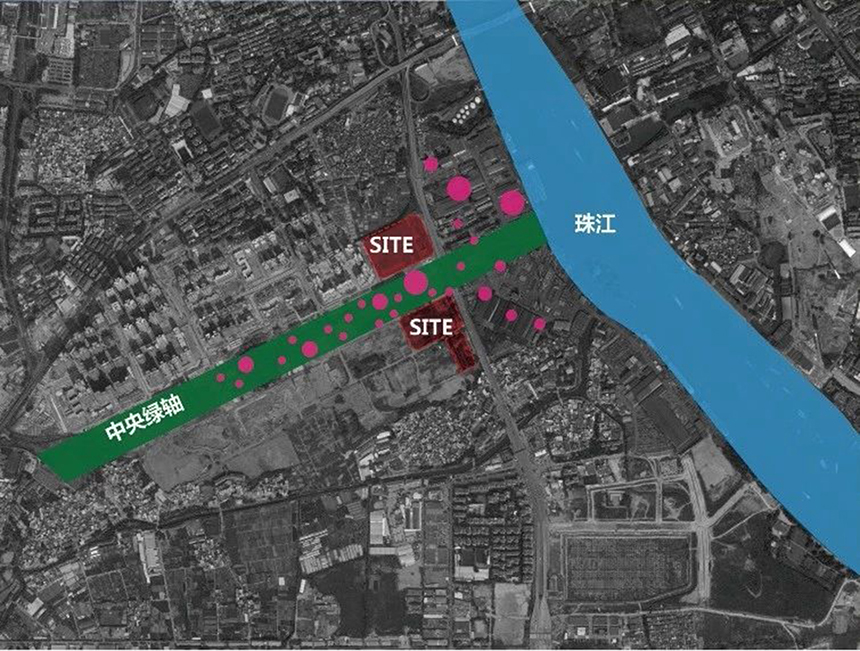
Q: How to make the portal less blocked?
Building an overall new Guanggang community, reducing the social contradictions of the built communities in the rear through the creation of a temperate and harmonious space is an architectural design, and it is also a reality that cannot be avoided in corporate development. Therefore, there are as few high-rise buildings as possible, and point-type high-rise buildings as high as possible, which can maximize the perspective view of the rear high buildings and the river view. The construction organizer of this project selects cooperative development companies through the PK mode of comprehensive development of commercial standard + technical standard with the design plan of the investor. Therefore, taking into account the actual interests of the residents in the rear is the state-owned enterprise Guangsteel must pay attention to. Going into the three-dimensional air and reducing the number of towers, rather than the development of the shielding of more high-rise buildings with horizontal walls, is the key to this proposal winning another bidder.
Q: How to improve the efficiency of ultra-high strength?
The biggest advantage of the minimum number of high towers is to avoid the area reduction loss of 60-70% of the low usage rate of high towers, and at the same time avoid excessive obstruction of the built-up settlements in the back row. In this way, the remaining area will be used as much as possible in the high utilization rate of the middle and low floors, and the building coverage density index proposed by the upper plan will be fully utilized to construct relatively compact small neighborhoods and open blocks to maximize Release the pressure of development to achieve the best combination of technology and economy.

Q: How to connect the north and south plots?
In the spatial organization of the high-tower clusters of the main tower, the middle tower and the secondary tower, a suitable primary and secondary relationship site selection is the key to this development and design PK. The construction of the north plot close to the subway station, crowded with people, suitable for the development of TOD commercial complex, will become the priority object of investment and construction. If the tallest main tower is placed on a complex near the subway, heavy capital pressure such as excessive capital investment, long construction period, and long investment promotion period will increase the difficulty of project development and implementation. Therefore, the relatively independent South Plot was chosen as the location of the tallest tower of the Guangzhou Iron and Steel Headquarters, and the subway complex in the North Plot plus two medium-high towers was based on the actual possible challenges of construction, and it could reduce the noisy retail business near the subway. , Isolated from the high-end office business format of the main tower, realizing a combination of spaces where people are grouped and businesses are grouped together.
The “central axis public green space” of Guanggang New City is like the aorta of the city. It is designed to connect the north and south sites through aerial corridors, hydrophilic platforms, and chronic walks to form a complete open space network; the pedestrian spaces connected to each other are both roaming for citizens The free path is also the link between Rachel's traditional industrial heritage and modern commercial office space.
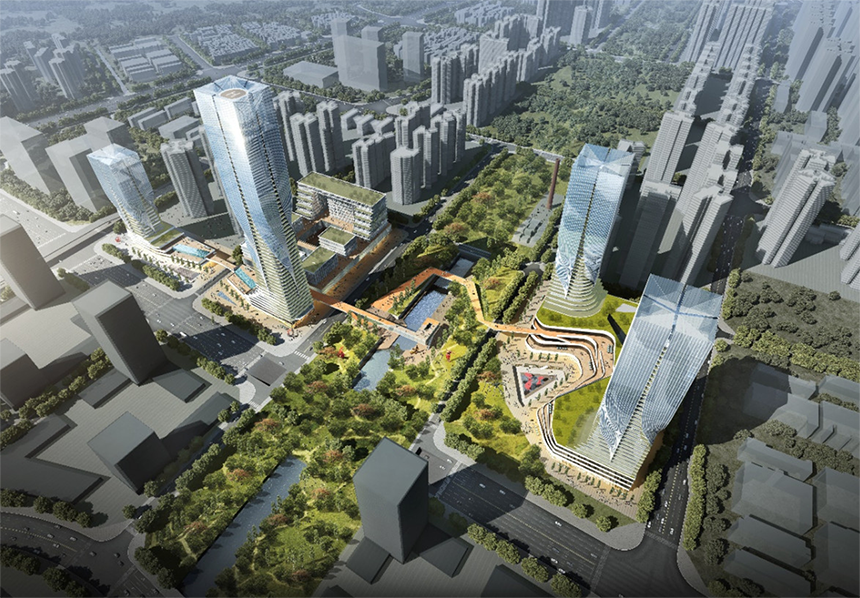
Emphasizing the opening and sharing of green space with industrial memory can not only guide the activities of the surrounding people, enhance the cohesion of the urban space, but also expand the living area of the surrounding residential people, which is a carrier for them to provide social interaction. The commercial and park design with the theme of humanities and history provides the surrounding residents and people with an experience of historical memory.
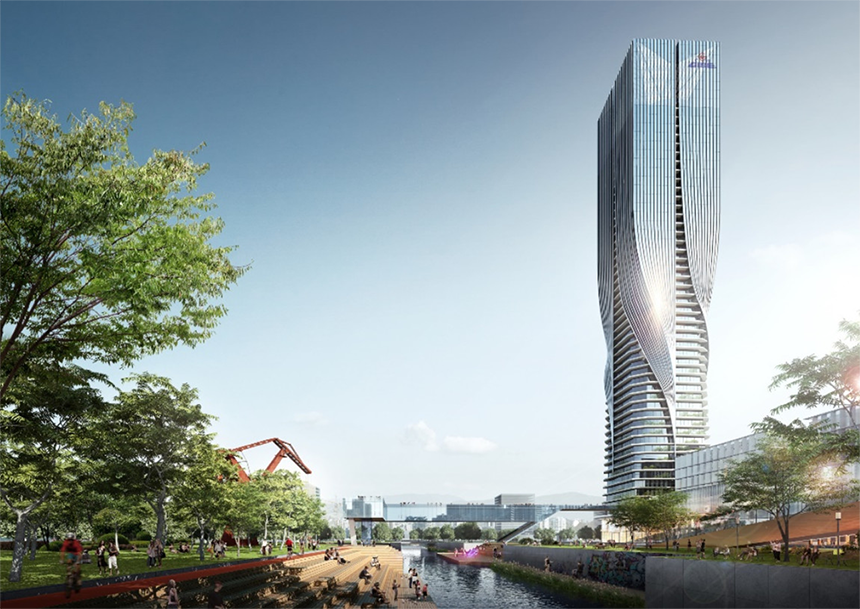
In the process of the transformation and activation of the commercial land in Guanggang New City, the core task is not only the reorganization of the space, but also the reconstruction of the characteristics of the place. Therefore, we propose three major transformation strategies: Cultural Linking, Guangzhou Steel Heart, and Sharing PTZ.

Cultural city
As the only public construction site in the Guanggang New City area, the project is dominated by high-end offices, five-star hotels, single-family offices and large-scale consumer commercial formats. The upper plan emphasizes the openness of the central green axis. Therefore, after determining the basic planning structure, we created a north-south three-dimensional path to closely link the scattered single buildings together, which not only ensures the connection between the buildings, but also expands the public space, forming an extremely active The public art space on the second floor has a strong connection between the underground space, the ground square, the terrace above the ground and the central green space, combined with cultural exhibitions to set up a viewing platform for the old site of Guangsteel to enhance the cultural theme experience of the citizens in the continuous walk.
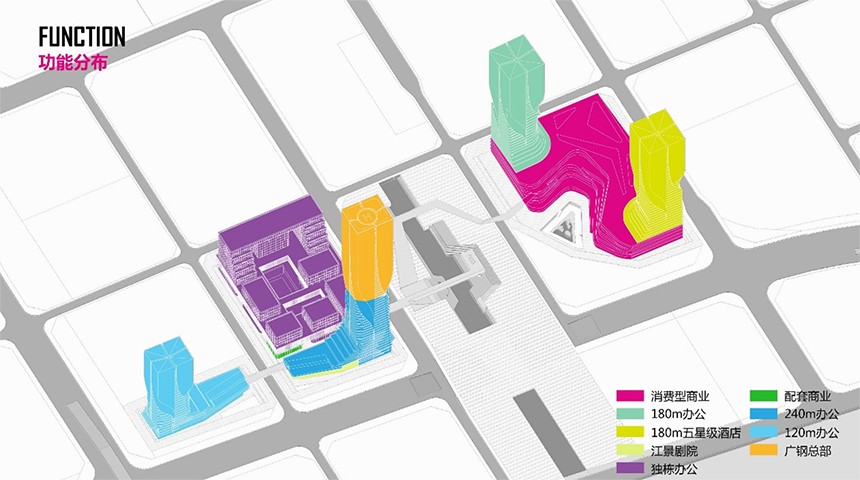
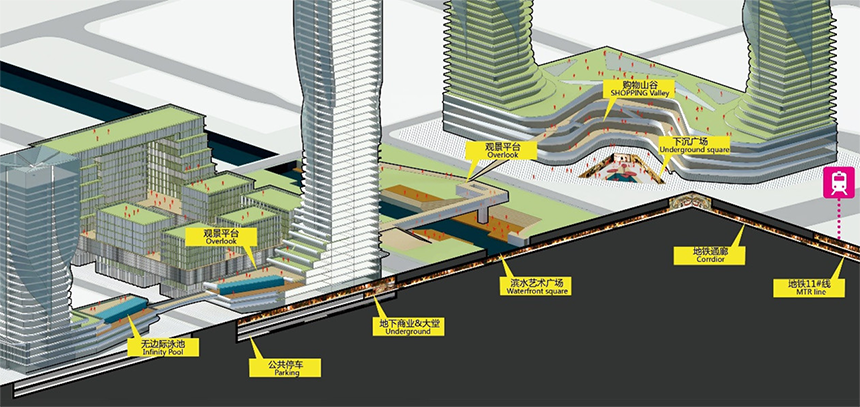
Zhuxi Gateway
As the end of Guanggang New City, it has an advantageous geographical location and is close to the entire city display area of the Pearl River. Integrated to create a patchwork group of buildings, the rich skyline of the landmark tower with a height of 240m has become the city's name card on the west bank of the Pearl River. At the same time, the Axis Cultural Park will be an extremely important landmark cultural exhibition hall of the project to the public, and the machines at the old site of Guanggang Steel will become an indispensable spiritual sculpture in the site.
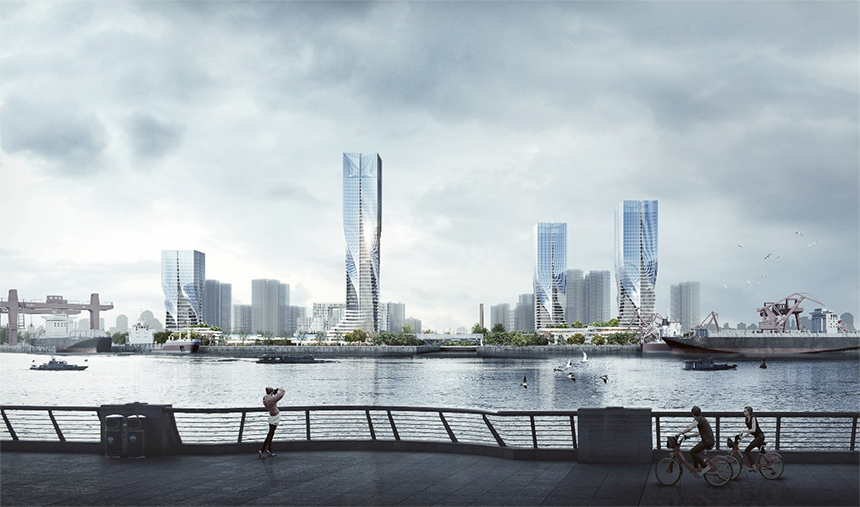
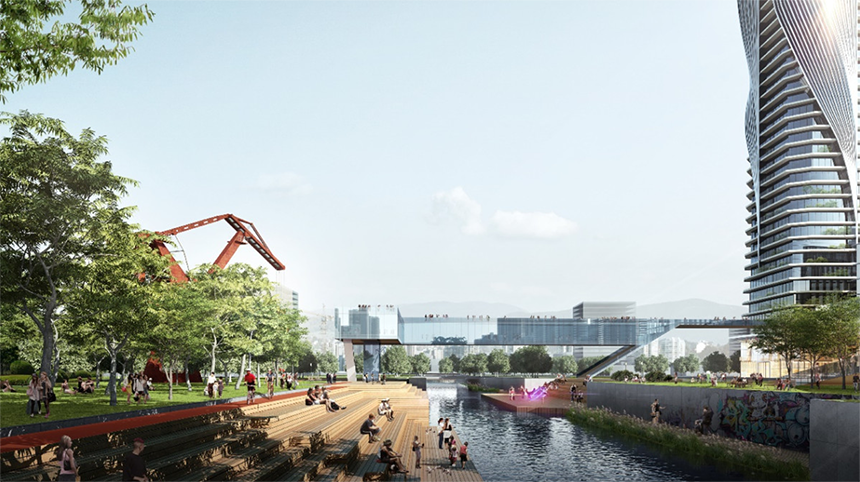
We put forward the concept of opening the ground floor, lowering the elevation, cutting the site, and opening the boundary to completely open the ground floor of the site to the public, forming a pedestrian-scale street space, and the central axis is a mixed office, retail, leisure space and transportation system. , Like a three-dimensional park superimposed by different elevations. The building adopts a retreat method to release more outdoor activity areas, and multiple formats are mixed to the greatest extent in the community, making the plot present a vibrant scene.
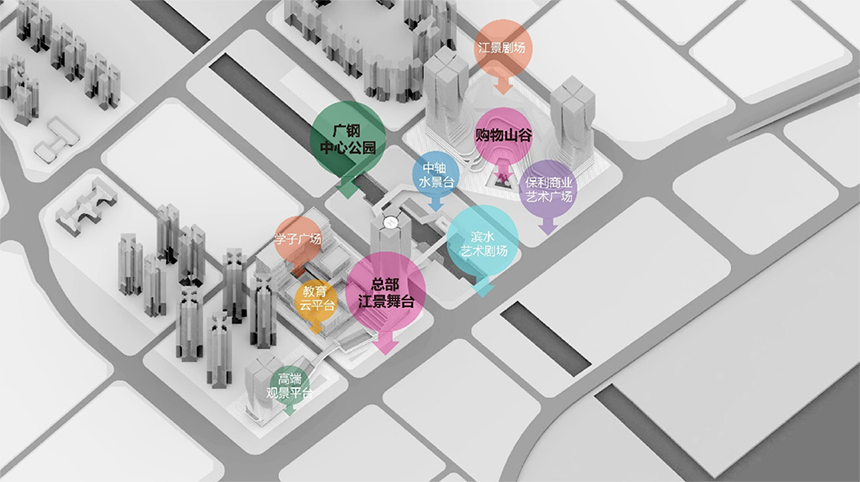
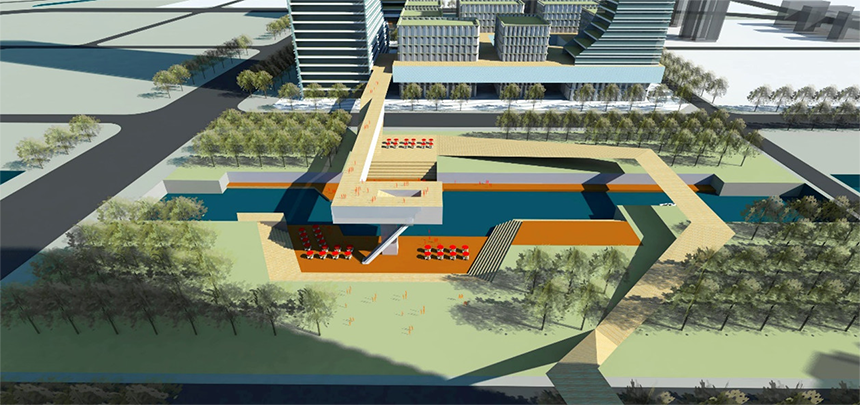
Abandoned workshops, shipbuilding machinery and old railways are the historical testimony of the Guangzhou Iron and Steel Plant. Through the opportunity of format replacement and function transformation, the integration of industrial remains with urban public life and artistic forms is a design of historical stock. Local exploration is not only a physical transformation of cold or passive urban space into a near-human-scale vibrant community space, but also an important opportunity to improve the quality of urban space and cultural attributes.
Design company: Zhubo Design Co., Ltd.
Project address: Guangzhou City, Guangdong Province
Land area: 85,000 square meters
Building area: 525,000 square meters
Design year: 2017
Project status: Design completed
Project owner: Guangdong Poly Real Estate Development Co., Ltd.
Chief Architect of the Project: Yang Weizhong
Project Chief Planner: Li Tao
Project designer: Xia Chong, Tang Daiwen, Lei Liang, Su Chudu



